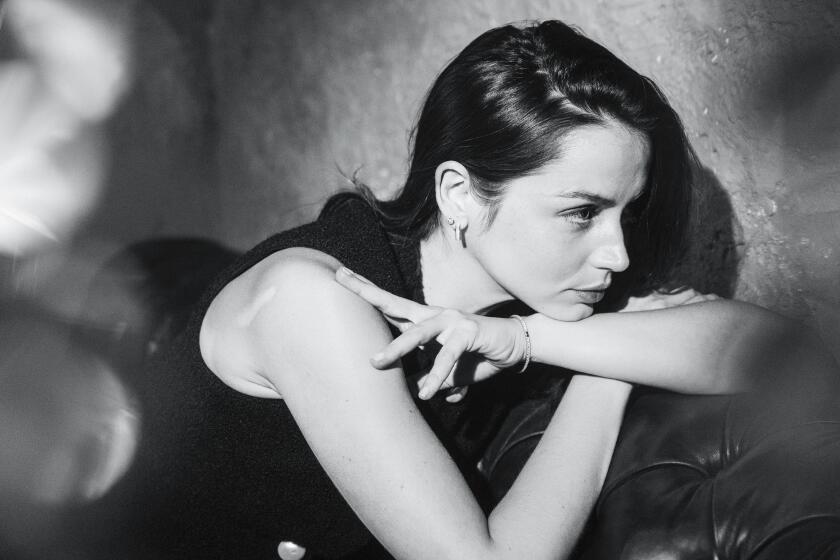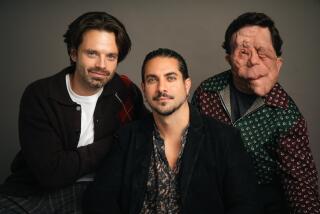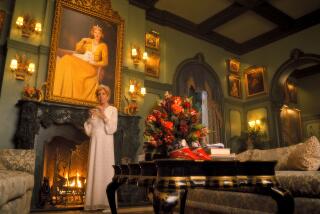How hair, makeup and costumes all came together to re-create Marilyn Monroe in ‘Blonde’
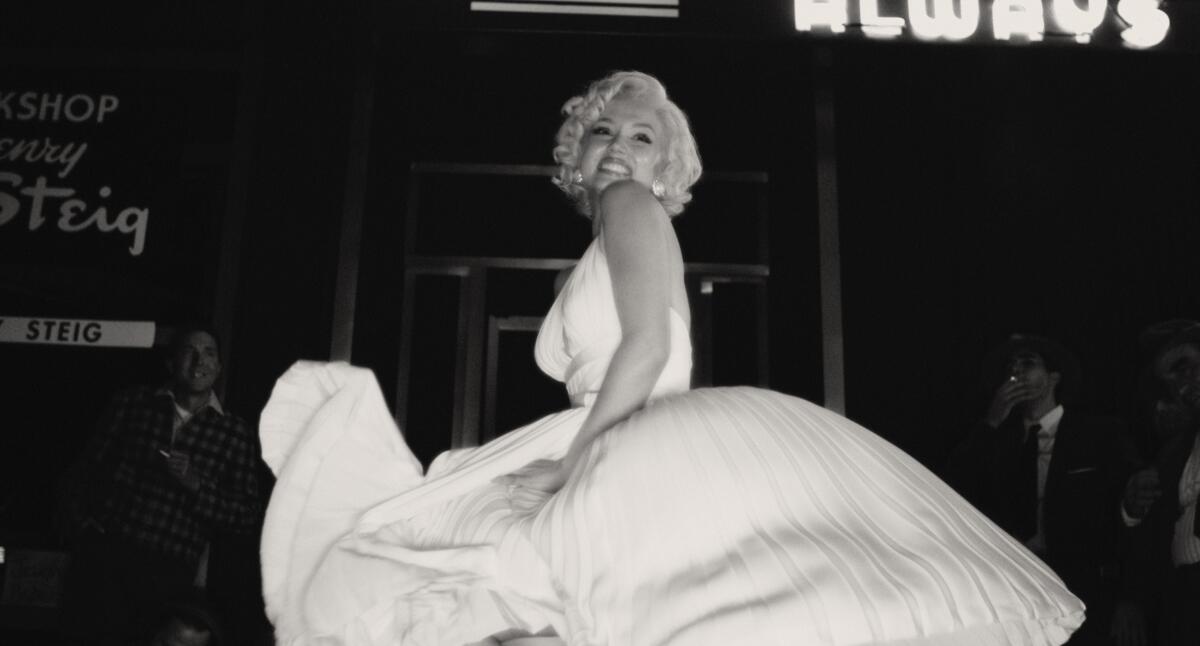
It should be easy to summon the look of Marilyn Monroe with little more than a blond wig, black eyeliner and a choice of replica costumes, but as countless celebrities such as Madonna (“Material Girl”), Michelle Williams (“My Week With Marilyn”) and Mira Sorvino (“Norma Jean and Marilyn”) have learned, there’s a vast divide between surface resemblance and uncanny reproduction.
In the Netflix movie “Blonde,” the hair, makeup and wardrobe combine to make one of the most convincing Monroes in quite some time. The work is perhaps the only uplifting element in an otherwise bleak and controversial story by writer and director Andrew Dominik.
The fictional film follows Monroe from her Norma Jeane childhood through her metamorphosis into the iconic star. Selecting Ana de Armas, a Cuban-born Spanish brunet, to play Monroe was met with skepticism, but her transformation into the blondest of bombshells not only illustrated the effectiveness of the wardrobe and beauty teams, but also earned a point for more inclusive casting. The actor covered her hazel eyes with blue contact lenses but wore no other prosthetics, apart from pieces to fit her wigs.
The crew could easily have been overwhelmed with reference material about Monroe, one of the most photographed women in the 20th century.
“Andrew came to the project having already worked on it for maybe 12 or 14 years. So he was ready,” said costume designer Jennifer Johnson. “He really knew what he wanted. He had compiled a PDF that was maybe 800 pages long. We called it the bible and that was his visual document that really drove the look of the film.”
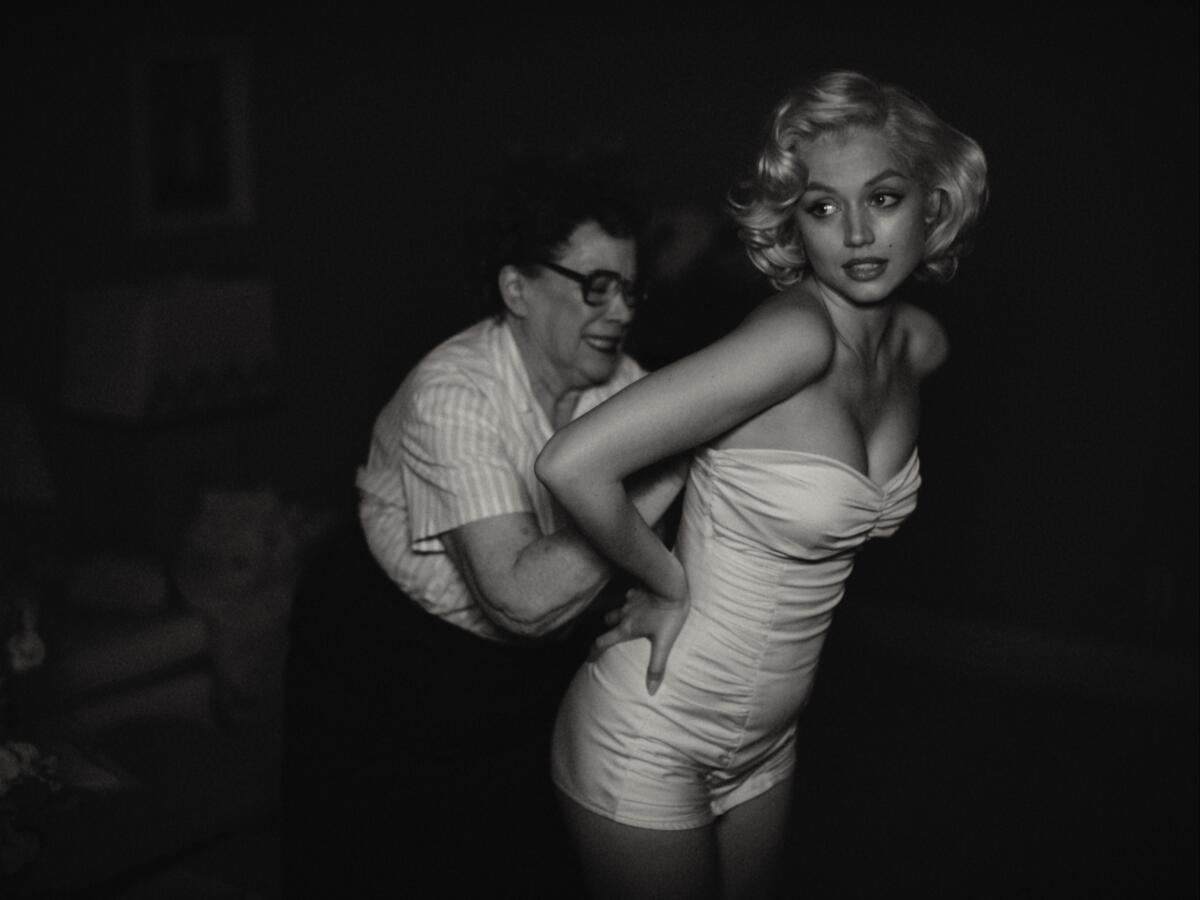
Johnson also conjured Monroe by studying auction catalogs of her personal effects and clothes, which were photographed in exacting detail. Shooting at locations where Monroe lived or worked in Los Angeles maintained the immersion.
“The fear and insecurity were in my favor,” Ana de Armas says of playing Marilyn Monroe. That, coupled with the sheer exhaustion of filming, helped the actor get inside the icon’s head.
“The makeup and hair trailer was covered with images of Marilyn,” said Tina Roesler Kerwin, makeup department head. “As we re-created them, we would put Ana’s picture next to them. There is a TV in the trailer and Marilyn Monroe movies were always playing.”
Before having wigs made, hair department head Jaime Leigh McIntosh researched images of Monroe’s unstyled hair to identify her natural texture.
“To re-create a hairstyle is one thing, but re-creating a head of hair and nature is another thing,” Leigh McIntosh said.
“Once we had the wigs made and found our Norma Jeane and our Marilyn, we could relax a little and not have to dig [into research] all the time, and we could focus on what we knew we were going to see,” she added.
Roesler Kerwin then gave De Armas the Monroe face, a nearly three-hour daily process.
“It took us a minute to find our Marilyn in Ana. I’m working on her in real time, on a real person, so there were tiny little adjustments that would relay some message that would work or not work.
“Before we started the film, I took Ana to an eyebrow specialist who minimized and bleached her brows,” she said. Both actresses have deep-set eyes, but Roesler Kerwin reshaped De Armas’ round eyes into Monroe’s almond shape. “Slightly raising the lashes above Ana’s eye line gives the illusion of that,” she said.
Eye makeup was perhaps the most challenging because as Monroe, De Armas cries. And cries and cries. A process of trial and error, lots of waterproof makeup and a magical Charlotte Tilbury foundation kept the color from washing away.
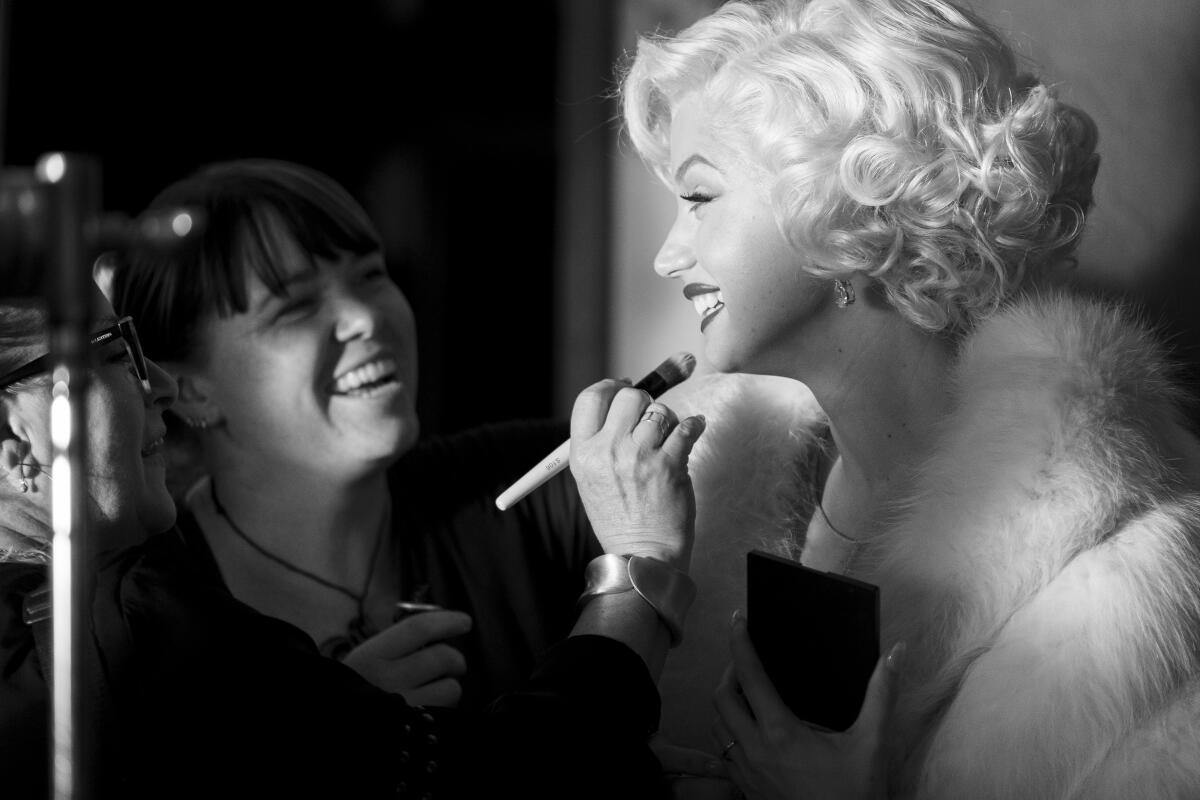
More challenging, some scenes were shot in color and in black and white, but the crew didn’t know which would be chosen during production, which they variously described as “trial by fire,” a “crash course,” “hyper-warp speed” and “to date, the most insane shooting schedule I have ever worked on.”
Wig changes were pared to a sub-10-minute process. For the nearly 45-day shoot in 2019, the crew raced through 100 costume changes and multiple crowd scenes that required a total of nearly 2,000 background players dressed in period costumes. To speed production, sometimes the crew dressed in period attire to allow cameras to roll during big scenes where they managed the extras.
The reliable constants — and the biggest challenges — were the iconic images of Monroe.
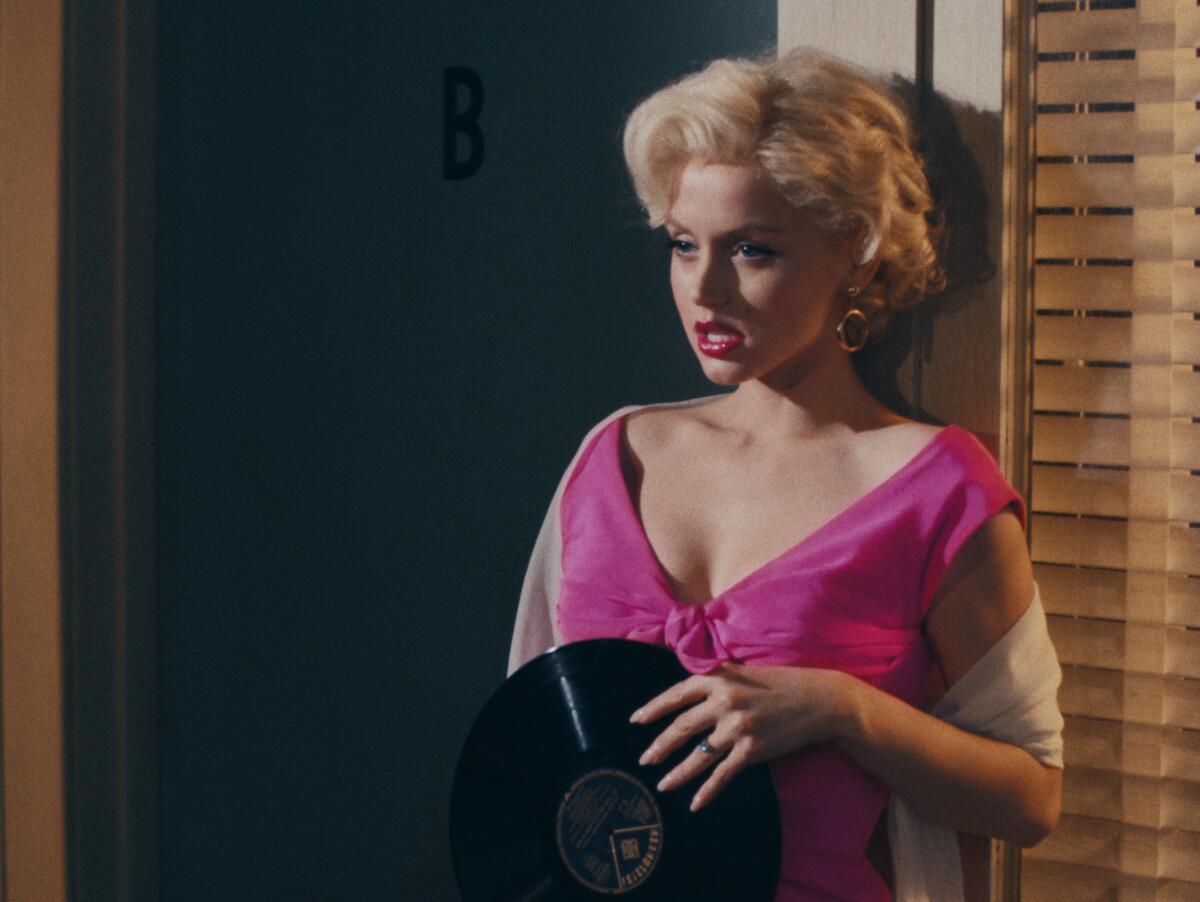
“It was a heavy lift to re-create the best designs,” said costume designer Johnson, who had to work against the forces of history, which included the loss of vintage techniques and craftsmen. Re-creating the famous white halter dress from “The Seven Year Itch” required a now-rare pleating technique and reverse engineering a complex pattern.
“Everyone had to go back to square one and forget what they knew in order to do it in the way that [designer] William Travilla and his team had done it,” she said.
The same difficulty applied conceptually to most of the film’s wardrobe.
“I think it was difficult because you’re sort of unraveling all the things that have been done wrong, right? You see these re-creations and the ones [on impersonators on] Hollywood Boulevard or at Universal Studios. You see those and you forget what the original one looks like and that becomes the design that you remember. And so it was really important to kind of unravel that impression that we all have.”
Johnson also had to reframe her own approach.
“I wasn’t dressing Marilyn Monroe. I was dressing Ana de Armas. I always kept that in mind. If you go through the practice of copying and it’s just a simulation and it’s very literal, it can feel very stiff and not alive,” Johnson said.
Capturing the mystique of a star who died 60 years ago may seem foolish, but in many ways Monroe is still alive in our popular culture, with collectors willing to pay $167,000 for an iconic sweater and filmmakers still aiming to resurrect her.
Those high expectations, along with the breakneck speed of the shoot and the tremendous number of costumes, fittings and scenes tested the crew’s skill and resilience, said Johnson. “To see it all come together, we just cried.”
More to Read
From the Oscars to the Emmys.
Get the Envelope newsletter for exclusive awards season coverage, behind-the-scenes stories from the Envelope podcast and columnist Glenn Whipp’s must-read analysis.
You may occasionally receive promotional content from the Los Angeles Times.
